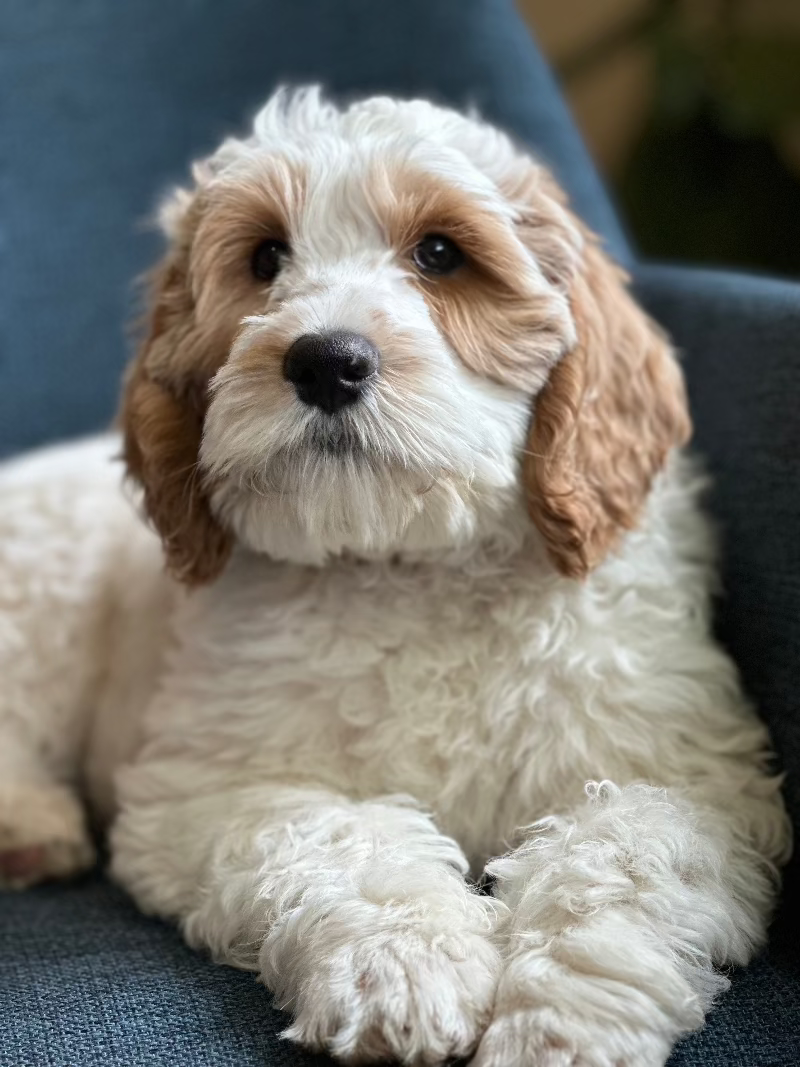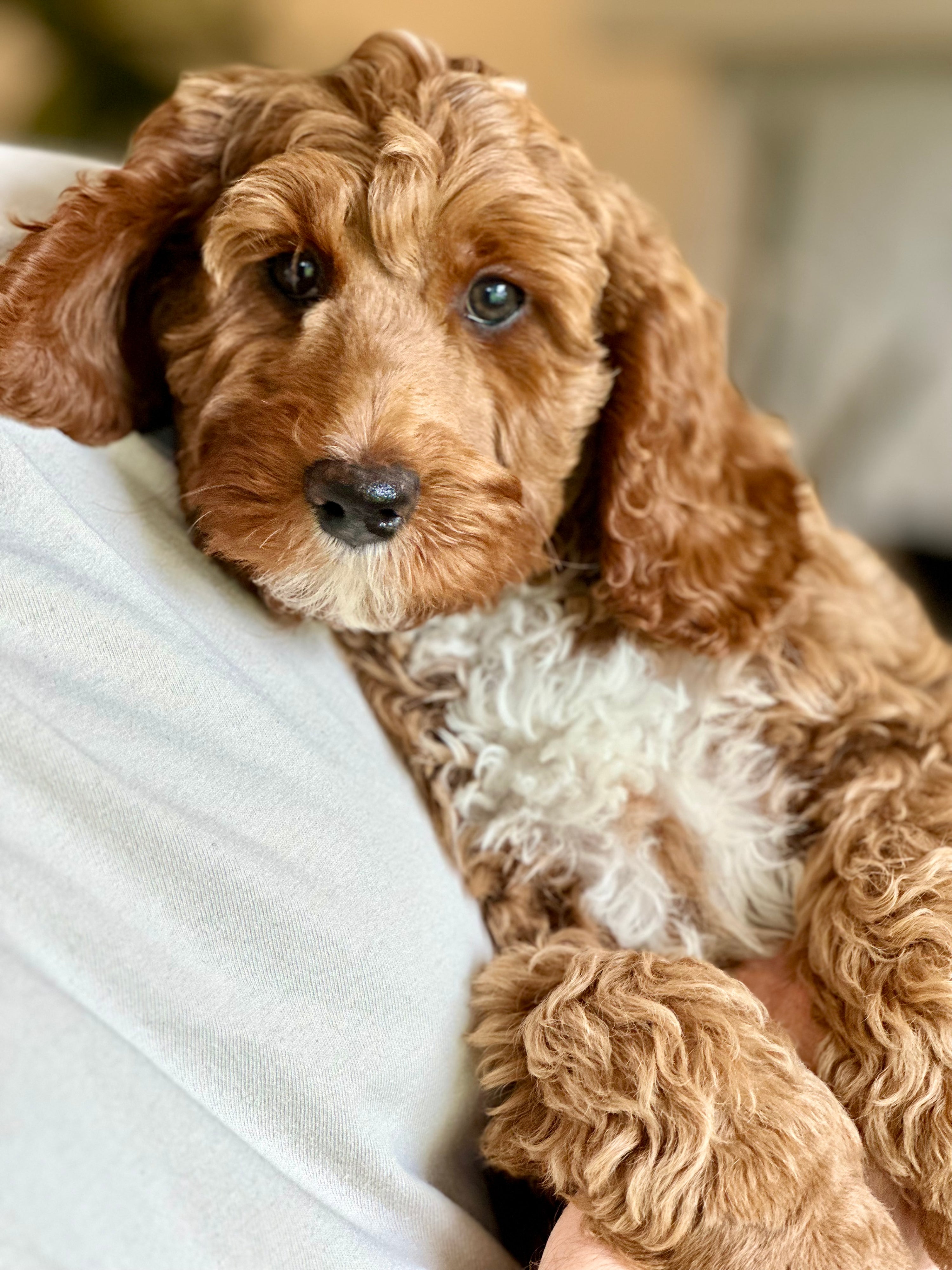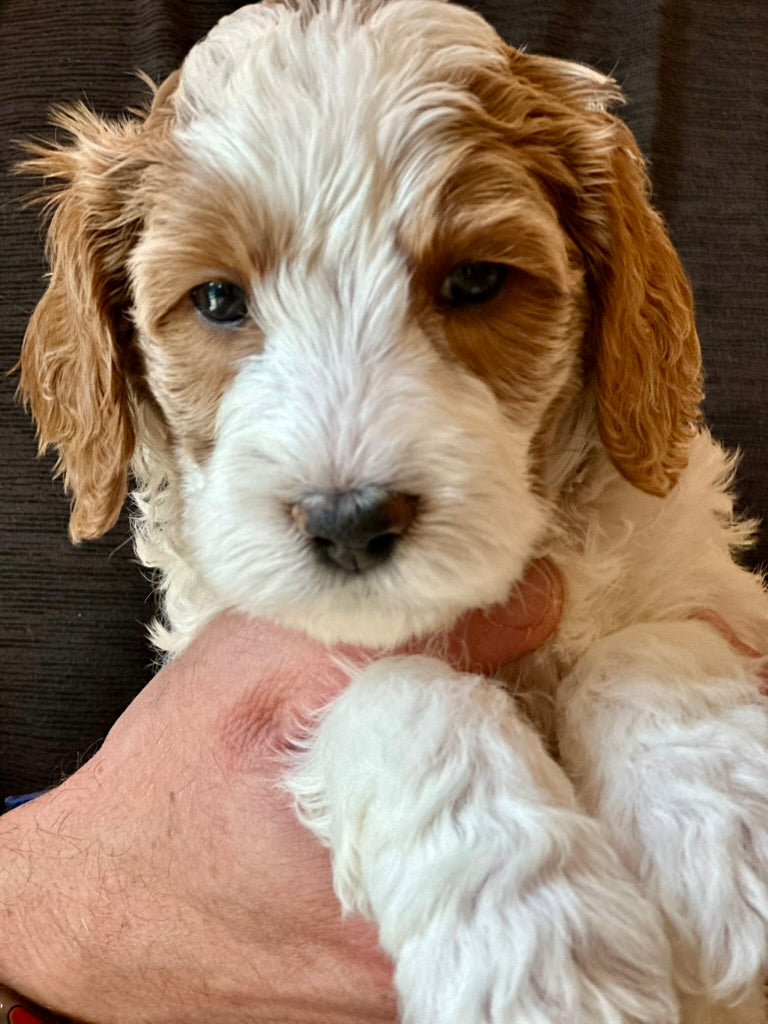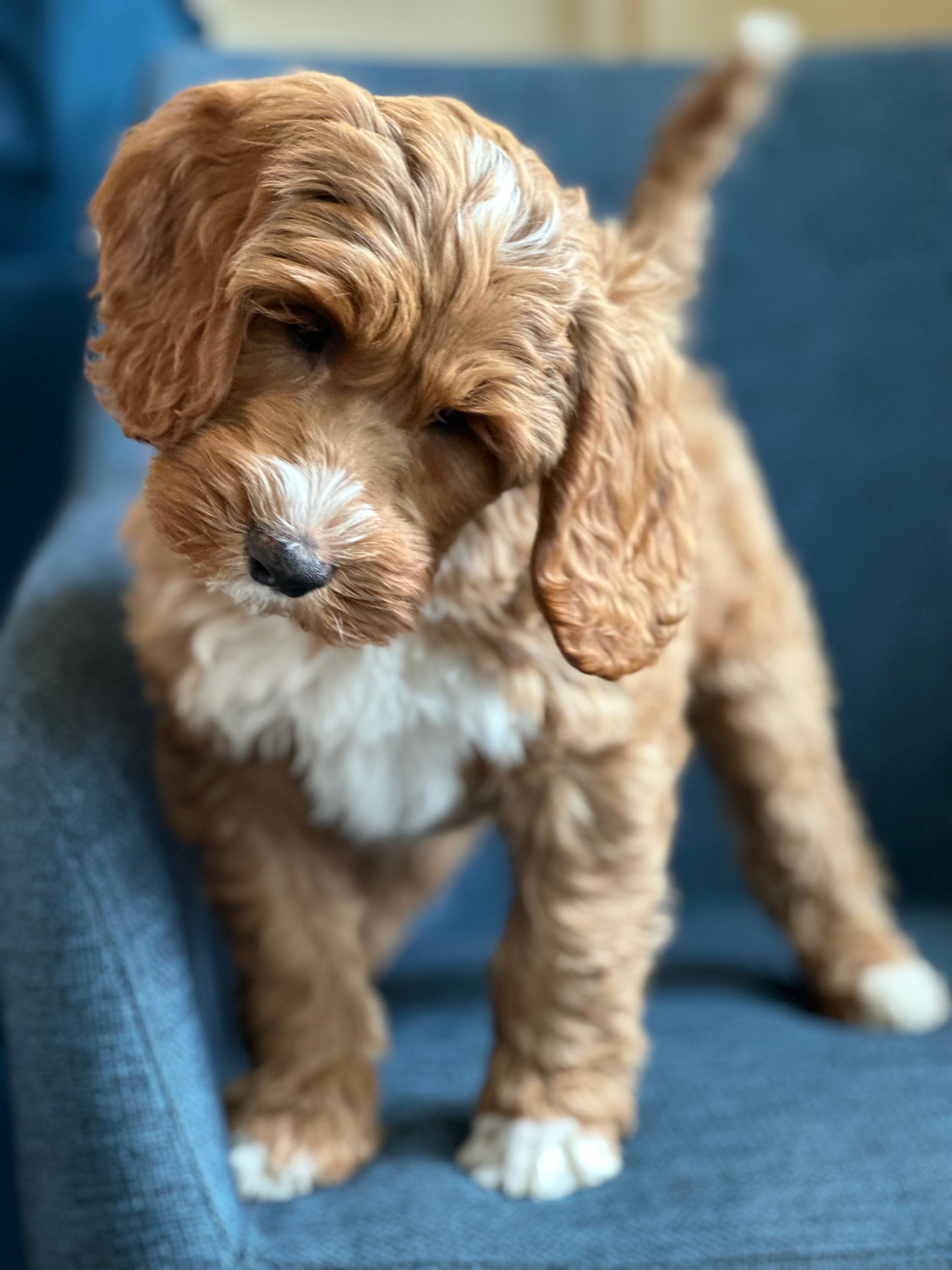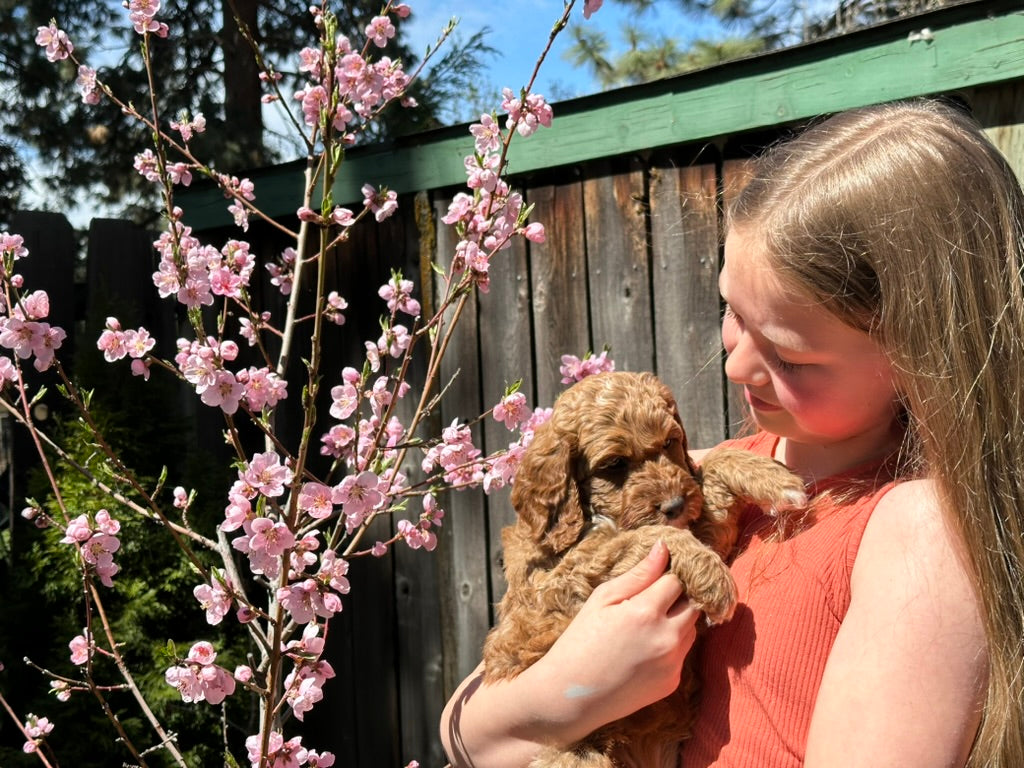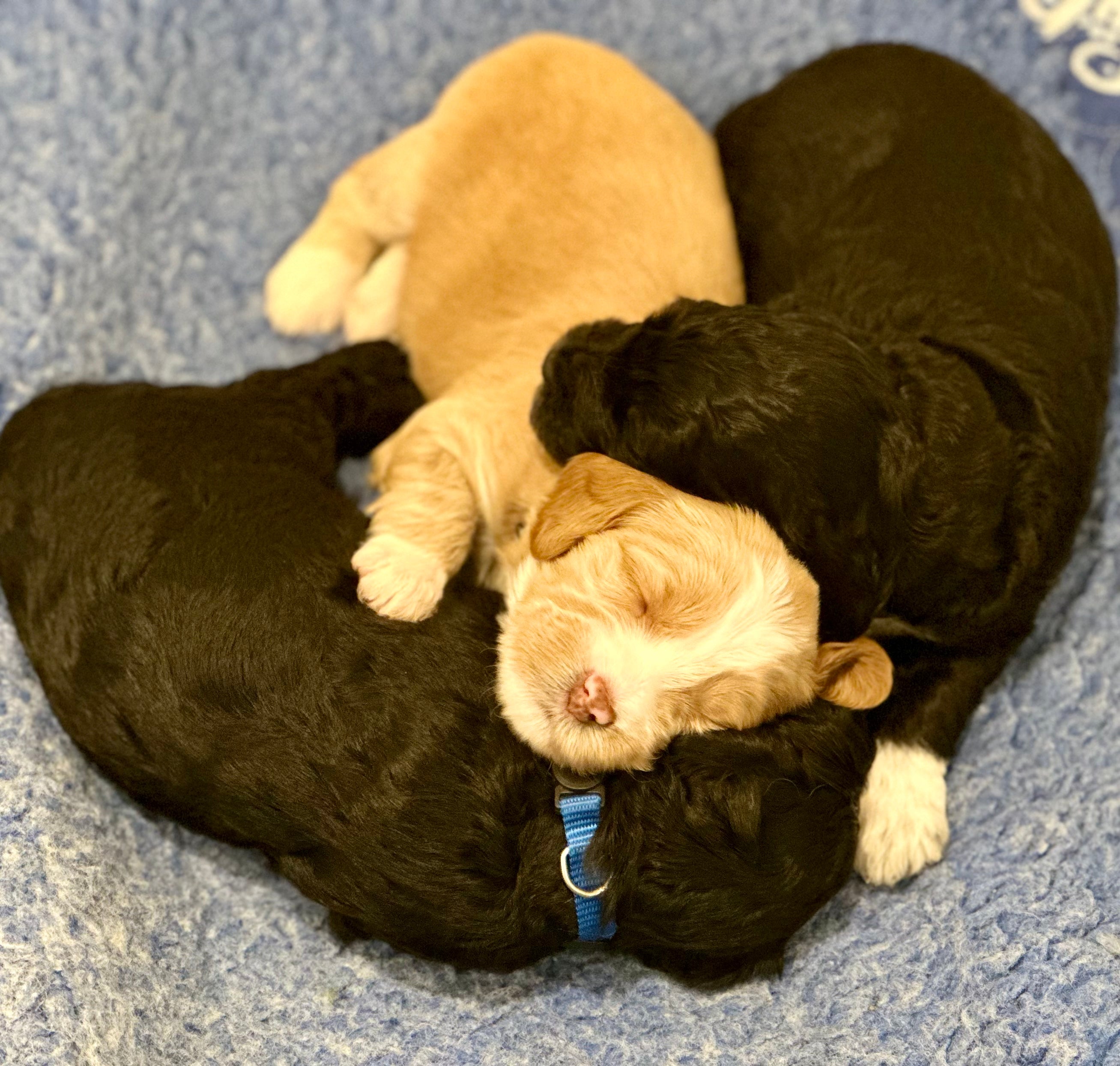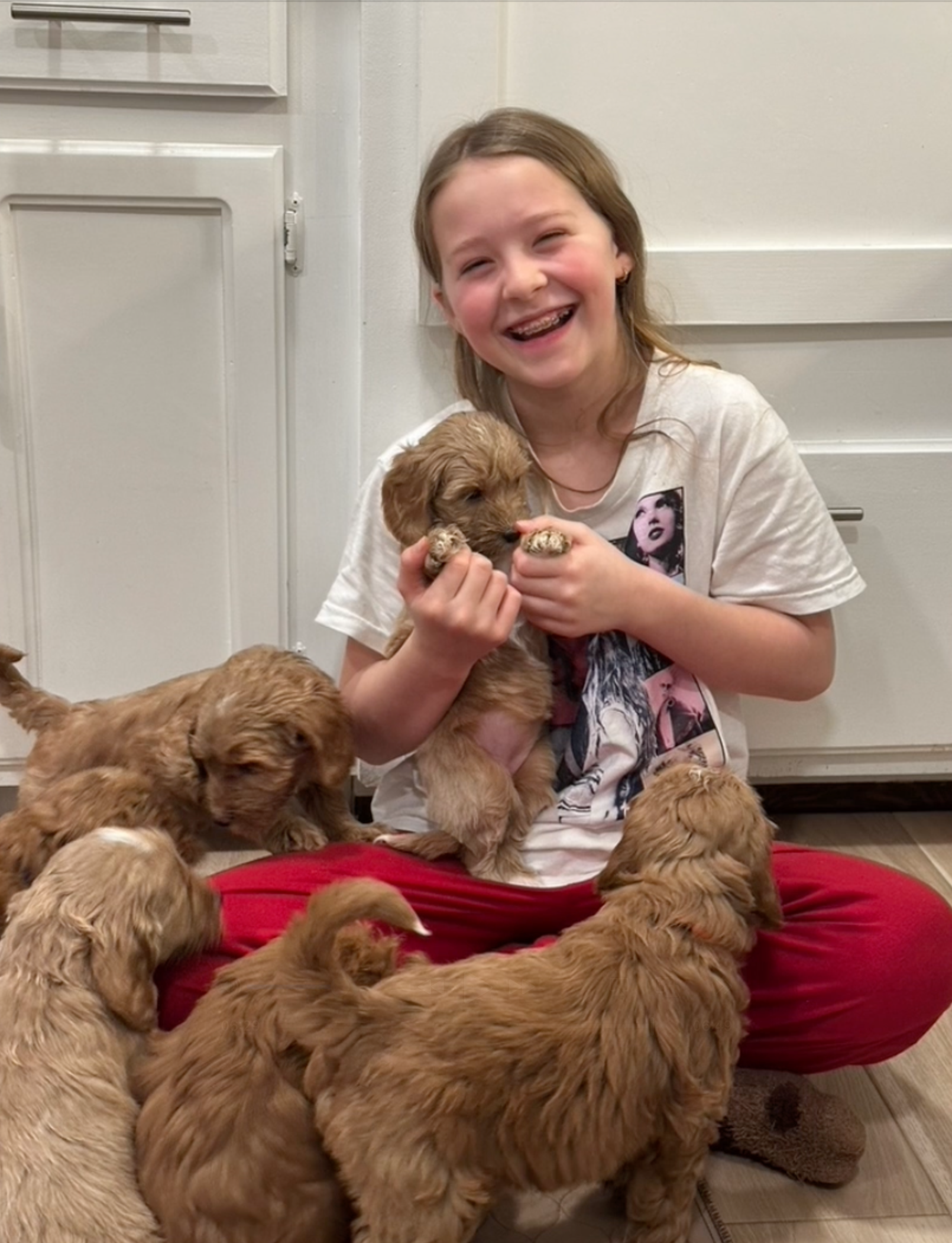About Australian Labradoodles

What is the difference between a Labradoodle, Australian Labradoodle, and Aussie Doodle?
These three are very different but are commonly mistaken for each other. A Labradoodle is a cross between a Labrador Retriever and a Poodle. They can range from F1 (first cross) to a multi-gen. An Australian Labradoodle is a breed in and of itself. They contain an infusion which is explained in the question above. An Aussie Doodle is commonly used inaccurately for an Australian Labradoodle. An Aussie Doodle is an Australian Shepherd bred to a Poodle. These dogs are very different and is completely a different breed to our dogs. All of our puppies are Australian Labradoodles.
History
The first litter of Labradoodles was bred in 1989 by the GDAV in Australia. John Gosling, the manager for GDAV Guide Dog Services, agreed to breed the first-ever Labradoodle in answer to a request from Pat Blum of Hawaii. She was a vision-impaired woman whose husband was allergic to dogs. The breeding manager for GDAV, Wally Conron, planned mating between Harley, a poodle, and Brandy, a Labrador Retriever. As a result, the first Labradoodle litter of three puppies was born.
Fur samples from the pups were sent to Pat as the pups matured. Most noteworthy, one of the pups, Sultan, proved to be shed-free and hypoallergenic. The combination of Sultan’s coat, mild temperament, and easy trainability made him a perfect guide dog companion for Pat and an allergy-friendly addition to her home. This was the beginning of the Labradoodle.
Therefore, the combination of the Labrador and the Poodle (and possibly Cockapoo) produced great puppies that were very smart and easy to train. This naturally led to people in the general public becoming interested in the breed as family pets. The desire for non-shedding, allergy-friendly coats has also played a huge part in the success and desirability of the Labradoodle.
Well-bred Labradoodles are easy to train, are sweet, loving, and make excellent therapy or companion dogs. Consequently, they are great for people who are blind, deaf, or have disabilities, and with children of all sizes.
Many people continue to breed the Labradoodle as they did in the beginning years, by crossing a Labrador with a Poodle to produce “first generation” Labradoodles. This method results in hybrid vigor and dogs with a wide variety of looks and coats. Some will be allergy-friendly, some will not. Some will shed, and some will not.
Labradoodle Traits
What is the reason for this variability? It usually takes several crosses to get the most authentic traits of the Labradoodle, while the first cross is not always reliable. Many breeders will try to “fix” the fact that the coat of a first-generation is not totally non-shedding or allergy-friendly, by breeding those first crosses back to Poodles. Then, by selecting the best from their litters, they breed those Labradoodles to other selected Labradoodles or Poodles. As a result, they go on to produce dogs that are more likely to not shed. Many will be allergy-friendly, and maybe, some will not.
The multi-generational Australian Labradoodles produced now by us have come a long way since the initial crosses of a Labrador & a Poodle. The multi-generational Australian Labradoodle is no longer considered a crossbreed, but a stand-alone breed by many organizations.
It has been carefully bred with quality genetics over the course of many years and the current dog produced has wonderful coats, beautiful personalities, and outstanding overall conformation.
High Desert Labradoodles only breeds multi-generational Australian Labradoodles.
Coat Maintenance & Grooming
In regard to coat maintenance, the first cross Labradoodle should have a fairly easy coat to care for. An occasional bath and weekly brushing should be sufficient. The multi-gen and F1b Labradoodle, with a wool coat, will need daily care, maintenance, and regular grooming.
However, a multi-gen or F1b with a fleece coat will be much easier to care for, and weekly or bi-weekly brushing should be sufficient. In addition, you may also wish to have your Labradoodle or Goldendoodle professionally groomed maybe a few times a year. I bathe my F1bs and Multi-gens approximately every other week, depending on their type of activity (hiking vs. playing in the yard).
